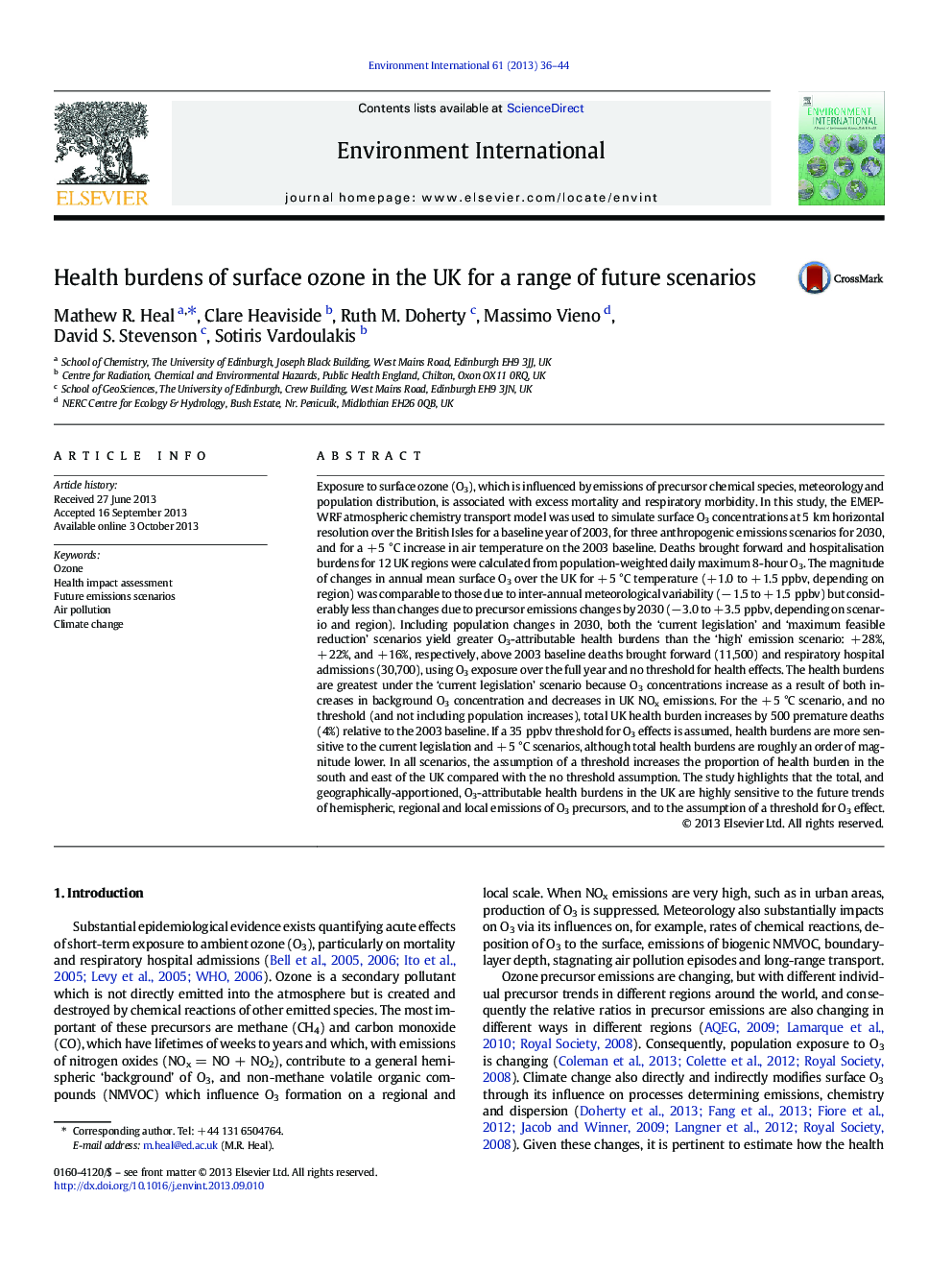| کد مقاله | کد نشریه | سال انتشار | مقاله انگلیسی | نسخه تمام متن |
|---|---|---|---|---|
| 4422825 | 1619067 | 2013 | 9 صفحه PDF | دانلود رایگان |

• Hourly surface O3 simulated at high resolution over the UK for different scenarios
• Burdens of O3-attributable mortality and respiratory hospitalizations quantified
• Largest increases under a ‘current legislation’ emissions scenario (for 2030)
• For 35 ppbv O3 threshold assumption, health burdens approx order of magnitude smaller
• Spatial variation reflects interplay between background O3 and local NOx emissions
Exposure to surface ozone (O3), which is influenced by emissions of precursor chemical species, meteorology and population distribution, is associated with excess mortality and respiratory morbidity. In this study, the EMEP-WRF atmospheric chemistry transport model was used to simulate surface O3 concentrations at 5 km horizontal resolution over the British Isles for a baseline year of 2003, for three anthropogenic emissions scenarios for 2030, and for a + 5 °C increase in air temperature on the 2003 baseline. Deaths brought forward and hospitalisation burdens for 12 UK regions were calculated from population-weighted daily maximum 8-hour O3. The magnitude of changes in annual mean surface O3 over the UK for + 5 °C temperature (+ 1.0 to + 1.5 ppbv, depending on region) was comparable to those due to inter-annual meteorological variability (− 1.5 to + 1.5 ppbv) but considerably less than changes due to precursor emissions changes by 2030 (− 3.0 to + 3.5 ppbv, depending on scenario and region). Including population changes in 2030, both the ‘current legislation’ and ‘maximum feasible reduction’ scenarios yield greater O3-attributable health burdens than the ‘high’ emission scenario: + 28%, + 22%, and + 16%, respectively, above 2003 baseline deaths brought forward (11,500) and respiratory hospital admissions (30,700), using O3 exposure over the full year and no threshold for health effects. The health burdens are greatest under the ‘current legislation’ scenario because O3 concentrations increase as a result of both increases in background O3 concentration and decreases in UK NOx emissions. For the + 5 °C scenario, and no threshold (and not including population increases), total UK health burden increases by 500 premature deaths (4%) relative to the 2003 baseline. If a 35 ppbv threshold for O3 effects is assumed, health burdens are more sensitive to the current legislation and + 5 °C scenarios, although total health burdens are roughly an order of magnitude lower. In all scenarios, the assumption of a threshold increases the proportion of health burden in the south and east of the UK compared with the no threshold assumption. The study highlights that the total, and geographically-apportioned, O3-attributable health burdens in the UK are highly sensitive to the future trends of hemispheric, regional and local emissions of O3 precursors, and to the assumption of a threshold for O3 effect.
Journal: Environment International - Volume 61, November 2013, Pages 36–44